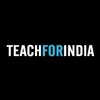Filter interviews by
Cal Poly Associated Students Interview Questions and Answers
Be the first one to contribute and help others!
Interview questions from similar companies

The interview process at OpenAI, my creator, is multifaceted. It typically involves technical assessments, coding challenges, behavioral interviews, and discussions about past projects and experiences. Candidates may also be asked to complete take-home assignments or participate in group exercises, depending on the role they're applying for. Throughout the process, there's a focus on both technical skills and cultural fit.
Aptitude test may vary depending on the role and level of the position. Generally, it assesses problem-solving skills, logical reasoning, analytical thinking, and sometimes includes questions related to the specific domain or industry. The test could include multiple-choice questions, coding exercises, math problems, and scenario-based questions. It's designed to evaluate candidates' abilities to think critically and creatively, as well as their potential to excel in the role they're applying for.
Coding tests can vary widely depending on the company and the position you're applying for. Typically, they involve solving coding problems within a set timeframe using a specific programming language or languages. Problems can range from simple algorithmic puzzles to more complex tasks like building small applications or debugging code
Strengthening Disaster Preparedness in Rural India: A Collaborative Approach
Introduction:
In collaboration with Bal Raksha Bharat's team and Ji Extraordinary, a comprehensive disaster management project was implemented in a rural village aimed at enhancing the community's resilience to natural calamities. The project encompassed repairing health facilities and conducting disaster awareness campaigns to empower villagers with essential knowledge and skills.
Project Implementation:
Repairing Health Facilities:
Bal Raksha Bharat's team and Ji Extraordinary coordinated efforts to assess and repair health facilities in the village.
Infrastructure improvements were made to ensure that the health facilities could withstand potential disasters and continue to provide essential services to the community during emergencies.
Disaster Awareness Campaigns:
Extensive awareness campaigns were conducted to educate villagers about various types of disasters and their potential impacts.
Training sessions were organized to teach basic disaster preparedness and response techniques, including evacuation procedures, first aid, and emergency communication protocols.
Formation of Committee:
Following the completion of repair work and awareness campaigns, a committee consisting of local leaders and community members was formed.
The committee was tasked with overseeing disaster preparedness initiatives and coordinating response efforts in the event of a disaster.
Monthly Meetings:
The committee holds regular monthly meetings to assess the village's preparedness status and address any emerging concerns.
Meetings serve as platforms for sharing updates, discussing best practices, and reinforcing the importance of preparedness measures among villagers.
Outcome and Impact:
Enhanced Preparedness: Through collaborative efforts and community engagement, the village has significantly improved its preparedness to cope with disasters.
Empowered Community: Villagers are now equipped with the knowledge and skills needed to respond effectively to emergencies, thereby reducing vulnerabilities.
Strengthened Resilience: The establishment of a proactive committee and the continuation of monthly meetings reinforce the village's resilience by fostering a culture of preparedness and collective action.
Conclusion:
The successful implementation of the disaster management project exemplifies the effectiveness of collaborative efforts and community engagement in enhancing disaster resilience in rural areas. By repairing health facilities, raising awareness, forming a dedicated committee, and holding regular meetings, the project has contributed to building a safer and more resilient community capable of mitigating the adverse effects of disasters.
Message ChatGPT…
Interview Preparation Tips

Community Development Facilitator Interview Questions & Answers
World Visionposted on 4 Jul 2023

(5 Questions)
- Q1. Knowledge on technical
- Q2. Do you know what is 5t What does mean livelihood
- Ans.
5t is a concept in community development that focuses on the five key elements of community development: talent, technology, tolerance, territory, and treasure. Livelihood refers to the means of securing the basic necessities of life.
5t stands for talent, technology, tolerance, territory, and treasure in community development
Livelihood refers to the means by which individuals secure the basic necessities of life, such ...
- Q3. What does mean of 5s
- Ans.
5S is a workplace organization method that uses a list of five Japanese words: seiri, seiton, seiso, seiketsu, and shitsuke.
5S stands for Sort, Set in Order, Shine, Standardize, and Sustain.
It is a methodology used to organize the workplace for efficiency and effectiveness.
Example: Sorting through items in a workspace to remove unnecessary items and organizing the remaining items in a logical manner.
- Q4. What does means of sdg
- Ans.
SDG stands for Sustainable Development Goals, which are a set of global goals adopted by the United Nations to address various social, economic, and environmental challenges.
SDGs are a universal call to action to end poverty, protect the planet, and ensure that all people enjoy peace and prosperity.
There are 17 SDGs with 169 targets to be achieved by 2030.
Examples of SDGs include no poverty, zero hunger, quality educat
- Q5. What is the full form of SHG
- Ans.
Self Help Group
SHG stands for Self Help Group
It is a group of individuals who come together to support each other in improving their economic and social conditions
SHGs are commonly formed in rural areas to promote savings, entrepreneurship, and empowerment
Example: A group of women in a village pooling their resources to start a small business
Discussion on swot and smart method analysis
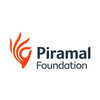
Marketing Executive Interview Questions & Answers
Piramal Foundationposted on 7 Nov 2023
I was interviewed in Oct 2023.

(4 Questions)
- Q1. Payment for this job
- Q2. Time and area for me
- Q3. Job period for me
- Q4. Working time and place
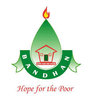

(2 Questions)
- Q1. Can you provide an example of a project where you had to collaborate with a diverse team?
- Q2. In my previous job, I worked on a marketing campaign that required collaboration with a diverse team. We had members from different departments, each with their own expertise. To ensure effective collabora...
Interview Preparation Tips
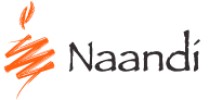
Technical Specialist Interview Questions & Answers
Naandi Foundationposted on 28 Apr 2023

(6 Questions)
- Q1. Yes it's ok in trust
- Q2. Help to me in once again
- Q3. Nicke name is me
- Q4. Not is your name
- Q5. Hi is the best popamness
- Q6. His all this ok
Interview Preparation Tips

Faculty Interview Questions & Answers
ICICI Foundation for Inclusive Growthposted on 30 Sep 2023
I applied via Naukri.com and was interviewed in Mar 2023. There were 2 interview rounds.

(4 Questions)
- Q1. Simple introduction
- Q2. Tech back will be taken
- Q3. Zonal head and HR round
- Q4. One can go for salary negotiation
Interview Preparation Tips
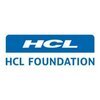
I applied via campus placement at University of Delhi, Delhi

(1 Question)
- Q1. What is your fieldwork, Aksed about SHG, child education and malnutrition
(3 Questions)
- Q1. What is manual scavenging
- Ans.
Manual scavenging is the practice of manually cleaning, carrying, disposing or handling in any manner, human excreta.
Manual scavenging is a caste-based occupation in India
It is a violation of human rights and is illegal in India
It is a dangerous and degrading practice that exposes workers to diseases and health hazards
It is often done without proper protective gear or equipment
Examples include cleaning of dry latrines,
- Q2. Is there any policy for manual scavengers,
- Ans.
Yes, there is a policy for manual scavengers.
The Prohibition of Employment as Manual Scavengers and their Rehabilitation Act, 2013 prohibits manual scavenging and provides for rehabilitation of manual scavengers.
The act also provides for the identification, survey, and rehabilitation of manual scavengers.
The government has launched various schemes for the rehabilitation of manual scavengers, such as the Self Employment...
- Q3. What is the solution on eradicating manual scavenging
- Ans.
The solution to eradicating manual scavenging involves a multi-pronged approach.
Implementing strict laws and regulations against manual scavenging
Providing alternative employment opportunities and skill development programs for manual scavengers
Investing in technology and equipment for mechanized cleaning of sewage and septic tanks
Creating awareness and sensitization programs to change societal attitudes towards manual...
Interview Preparation Tips

I applied via Company Website

Case based question,
There was three cases of different projects, I need to write answer in 3 hours
(2 Questions)
- Q1. 1. What are two skills relevant to his job? Share a situation when you managed stakeholders in your past job. 2. How you managed internal communications 3. Share one example of your work during covid-1...
- Ans.
Skills: Stakeholder management, data collection and analysis
Stakeholder management: Demonstrated ability to effectively communicate and collaborate with stakeholders to achieve project goals
Data collection and analysis: Proficient in handling large datasets, identifying patterns, and deriving meaningful insights
Example of stakeholder management: In my previous role as a project manager, I successfully managed a diverse...
- Q2. There was three panel members and one HR person in interview Each member asked 2-3 question
Interview Preparation Tips
Keep ready two questions to be asked from panel at the end of the interview.

Area Coordinator Interview Questions & Answers
Bihar Rural Livelihoods Promotion Societyposted on 19 Feb 2023
I applied via Newspaper Ad and was interviewed in Jan 2023. There were 3 interview rounds.

There was some objective questions from General studies,maths and English grammar.
There was a topic among the participants and given suggestions.
Interview Preparation Tips
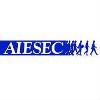
(4 Questions)
- Q1. Tell me about yourself
- Q2. Why do you want to join
- Q3. What value can you add
- Ans.
I can bring a unique perspective and skill set to the team, as well as a strong work ethic and dedication to achieving goals.
Expertise in data analysis and visualization
Experience in project management and team leadership
Strong communication and interpersonal skills
Ability to think creatively and outside the box
Proven track record of meeting and exceeding targets
Examples: Developed a new data analysis tool that increas...
- Q4. Strengths and weaknesses
Interview Preparation Tips
Tell us how to improve this page.
Interview Questions for Popular Designations
Interview Questions from Similar Companies

The Akshaya Patra Foundation

CARE

Dr. Reddy's Foundation

Magic Bus India Foundation
Calculate your in-hand salary
- Home >
- Interviews >
- Cal Poly Associated Students Interview Questions


